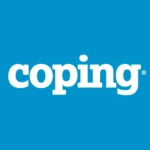Cardiovascular Disease and Cancer
American Cancer Society (ACS) research estimates there are more than 18 million adult survivors of cancer in the United States, and that number is expected to climb to more than 22 million by 2030. Although that’s encouraging news, it also puts increasing numbers of survivors at risk for cardiovascular disease or CVD.
A recent study found adult survivors of cancer had a 42% greater risk of CVD than people without cancer. The authors found that survivors of cancer had a particularly higher risk of developing heart failure (52% higher risk), followed by stroke (22% higher risk). The incidence of CVD was highest in survivors who had breast, lung, and hematological/lymphatic cancers.
“Treatments for cancer, like radiation and chemotherapy, can help people live longer. However, certain treatments have potential side effects, including new or worsening heart disease,” says Dr. Arif Kamal, chief patient officer at the American Cancer Society. “The type of damage to your heart and the risk of causing a problem can vary depending on the therapy, but it’s a real health risk that is oftentimes neglected.”
Heart conditions that can develop or worsen after cancer treatment are:
- Congestive heart failure
- Coronary artery disease
- Cardiomyopathy
- Damage to heart valves
- Myocarditis (Inflammation of the heart muscle)
- High blood pressure
CVD affecting people with cancer has led to the increase of cardio-oncology as a subspecialty of medicine. Cardio-oncology focuses on identifying, monitoring, and treating cardiovascular diseases caused by cancer treatment. The goal is to reduce the side effects cancer treatment can have on a person’s cardiovascular system. Cardio-oncologists collaborate with other healthcare providers to tailor treatment and care to your needs.
“Cancer survivors are a high-risk population and should be prioritized for interventions that lower the chance of heart disease later in life,” said Kamal. “Health care providers need to actively reinforce the importance of prevention against CVD.”
Sometimes cancer-related side effects and symptoms don’t show up until long after treatment ends. Whether you’re still in treatment, recently completed it, or long since finished, be sure you’re getting follow-up care and doing everything you can to safeguard your health. The ACS suggests taking steps to protect your health, including:
- Avoiding tobacco products
- Getting to and staying at a healthy weight
- Getting regular exercise
- Eating a healthy diet
- Avoiding or minimizing alcohol use
- Getting recommended cancer screenings
- Creating a survivorship care plan
- Keeping your follow-up appointments
- Taking care of your emotional health
Kamal also recommends working with your cancer care team to find out whether your treatment can cause any heart-related problems. If so, there are often ways to help lower the risk.
Source: American Cancer Society, February 2023


